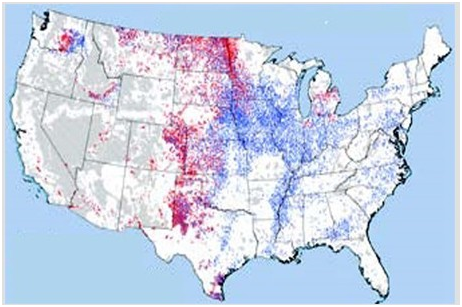Though New Zealand is relatively close to Australia, it's faunal assemblages are quite different. For instance, there are no native marsupials in New Zealand. Which of the following best accounts for these differences?
A) The environments of Australia and New Zealand are completely different, despite their close proximity.
B) New Zealand experienced a major extinction that wiped out its marsupials and other Australian fauna.
C) New Zealand is an island, whereas Australia is a continent. As such, one wouldn't expect them to have the same faunal assemblages.
D) New Zealand was isolated from Australia during critical evolutionary times.
D
You might also like to view...
What compound in the stratosphere is essential to the survival of plants and animals on earth by blocking out harmful UV radiation?
A. ozone B. carbon dioxide C. methane D. water vapor
All of the following are broad classes of rock except
a. sedimentary b. igneous c. metamorphic d. crystal e. limestone
The red areas in the map below are places where

A) soil erosion due to wind is a major problem.
B) soil erosion due to water is a major problem.
C) soil is being formed faster than it is being eroded away.
D) salinization is leaving the soil ineffective for agriculture.
The Grenville orogeny was the culminating event of the amalgamation of Laurentia. Indicate whether the statement is true or false